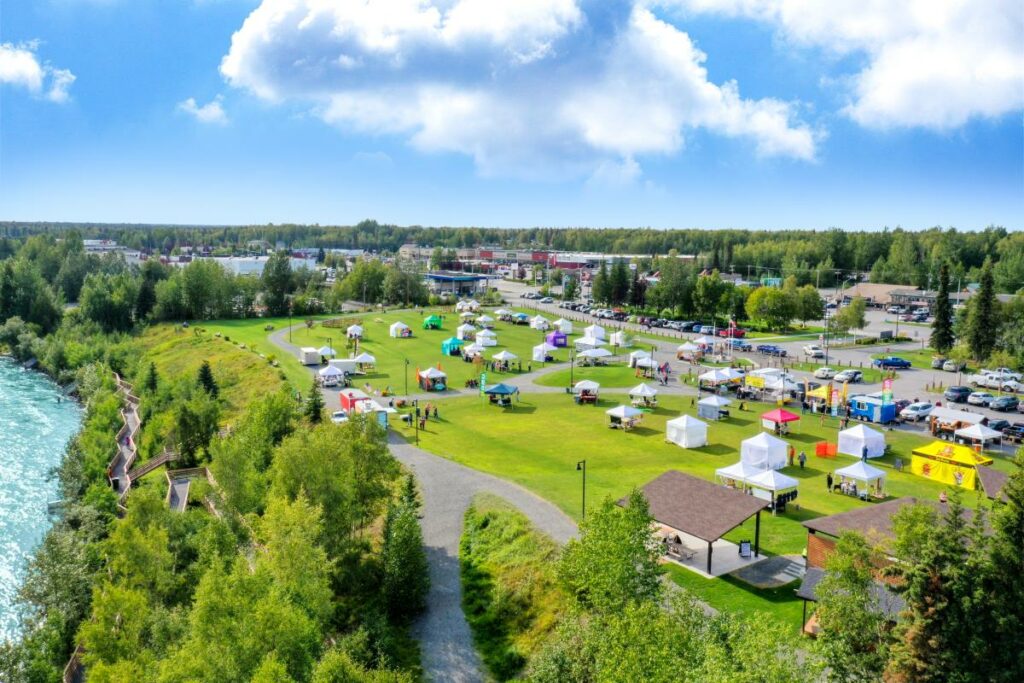
Recently, members of the SGA team visited Soldotna, Alaska, where we met with the fourth cohort of the Complete Streets Leadership Academies. At the convening, we brought together teams from Soldotna and the Alaska Department of Transportation and Public Facilities to discuss strategies to make Soldotna’s streets safer and provide more opportunities to walk and bike.
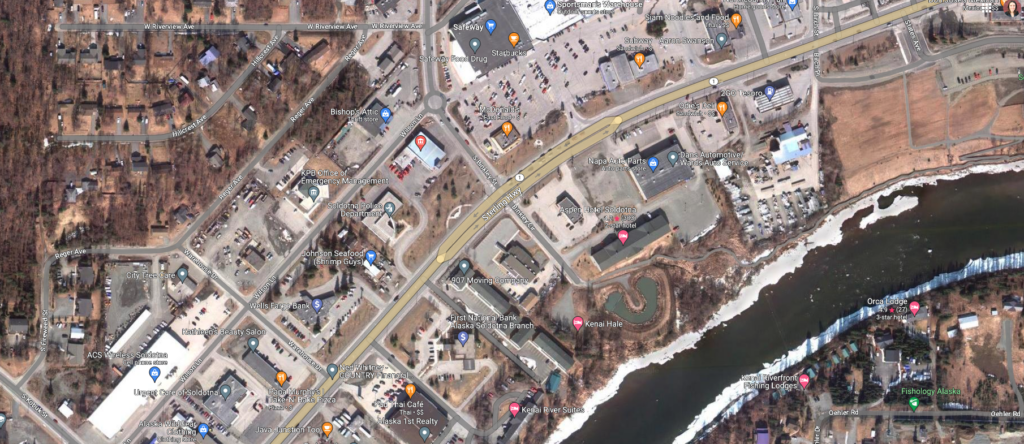
Sterling Highway, a 138-mile state-owned throughway that cuts across the Kenai Peninsula of Alaska, has brought decades of development and visitors to the community of Soldotna, AK. Still, an essential method for entering Soldotna, the Sterling Highway poses a challenge for resident and visitor safety. The five-lane highway is difficult and unpleasant for pedestrians and cyclists to cross, and vehicle traffic into surrounding businesses interrupts sidewalk and bike lanes along its route. The result is that for most travelers looking to reach the popular Kenai River and Soldotna Creek Park running parallel to the highway—often the site of vibrant summer festivals and gatherings—walking and cycling don’t feel like safe or comfortable options.
This was the problem Soldotna hoped to solve when they partnered with the Alaska Department of Transportation and Public Facilities (DOT&PF) and applied to participate in the 2022-23 Complete Streets Leadership Academy, a series of virtual and in-person workshops dedicated to developing strategies to transform streets into safer and healthier places. Their efforts will culminate in a “quick-build” demonstration project at the intersection of Birch Street and Sterling Highway, improving access to Soldotna Creek Park for people walking, cycling, and using mobility aids.
“The goal of the project is to improve safety for pedestrians and non-motorized users as they attempt to cross the highway during the busy summer months,” Soldotna Director of Economic Development and Planning John Czarnezki wrote in a May 24 memo to Soldotna City Council members.
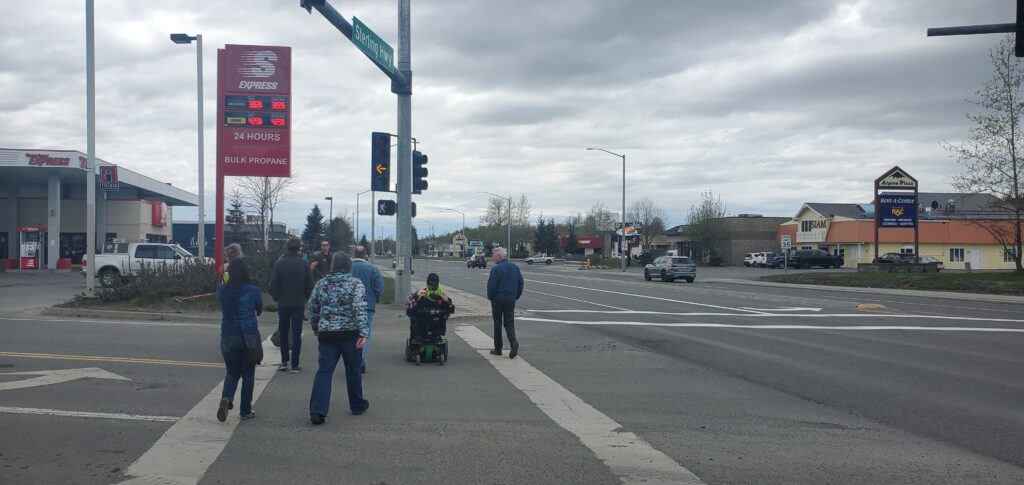
Unlike the other cohorts participating in the Complete Streets Leadership Academy, the Alaska cohort includes just one city. But that didn’t leave a shortage of topics to cover. Prior to the two-day in-person workshop, they met virtually for several months, getting training on Complete Streets implementation and identifying barriers to developing a local project on a state-owned road.
The in-person gathering provided an opportunity to further plan and develop specific steps to move their project forward, allowing the Soldotna team to troubleshoot in real time with members of Alaska DOT&PF. The workshop included a project presentation from city staff, group discussions, tabletop exercises led by SGA and Stantec instructors, a walk audit of the quick-build site, and extensive guidance on implementing quick-builds and evaluating the effectiveness of the project. Here’s how it went:
Two teams with the same goal
Developing a strong plan is easiest when everyone in the room is working to solve the same problem. Alaska DOT&PF and the City of Soldotna both brought staunch advocates to the table who were prepared to pursue safe and healthy streets. Throughout the two-day workshop, both sides took full stock of the challenges presented by their chosen intersection, listened carefully to each others’ concerns, and worked together to brainstorm solutions and offer suggestions to overcome potential roadblocks. When it came time to identify next steps after the workshop, DOT&PF committed to providing additional support and resources to the Soldotna team to help keep the project running smoothly. Each team took ownership of the project’s success by coming up with a list of concrete actions they would take to get the quick build off the ground.
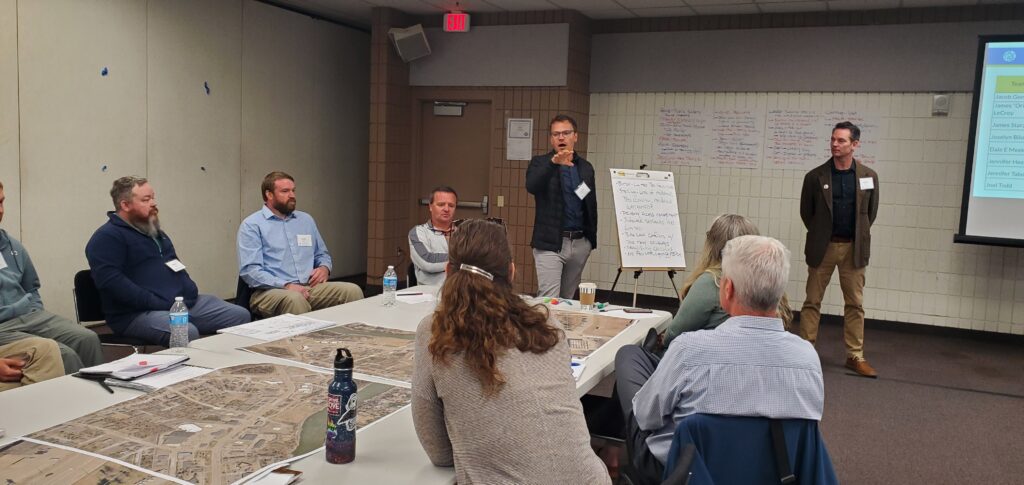
Multiple perspectives lead to deeper understanding
Soldotna representatives included avid cyclists, members from multiple city departments, elected representatives, people with disabilities, and law enforcement officials. They each brought different experience and knowledge to help address the issue at hand, from a background on the highway and how it developed into the five-lane roadway we see today, to specifics on the traffic incidents that occur near the park, to what makes this intersection difficult to navigate on a daily basis.
Representatives from Alaska DOT&PF shared concerns of road users that rely on Sterling Highway to reach other parts of the state, specifics on the technology options for the traffic signals at Sterling Highway and Birch Street, and other solutions they’ve utilized in the past for similar projects.
By learning from each other’s perspectives, the Alaska cohort was able to better evaluate the needs for the project and ensure its success.
Embracing the possibility
On the final day of the workshop, the cohort broke up into two groups, combining representatives from Alaska DOT&PF and the City of Soldotna on each side. They brainstormed how to bring their quick-build project to life, and quickly came up with ideas to repurpose materials they already use on a regular basis. They also discussed ways to bring color and attention to the intersection to enhance safety for people crossing the street, including trying strategies they’ve never tried before. The cohort’s creativity and willingness to keep an open mind helped them develop a strong, actionable vision. And it made the local news.
Takeaways and what to look forward to
At the end of the two-day workshop, the Alaska cohort had more fully fleshed out their plan for the quick-build project. Working together, the city and DOT were able to create a concept that not only felt exciting, but possible. However, the most valuable result from this workshop was the mutual trust and teamwork built between the state DOT and city staff, which creates a strong foundation for future efforts to enhance the health and safety of Soldotna’s streets. With a strong plan in place, we’re excited to see the evolution of this quick build and the start of a safer Soldotna.
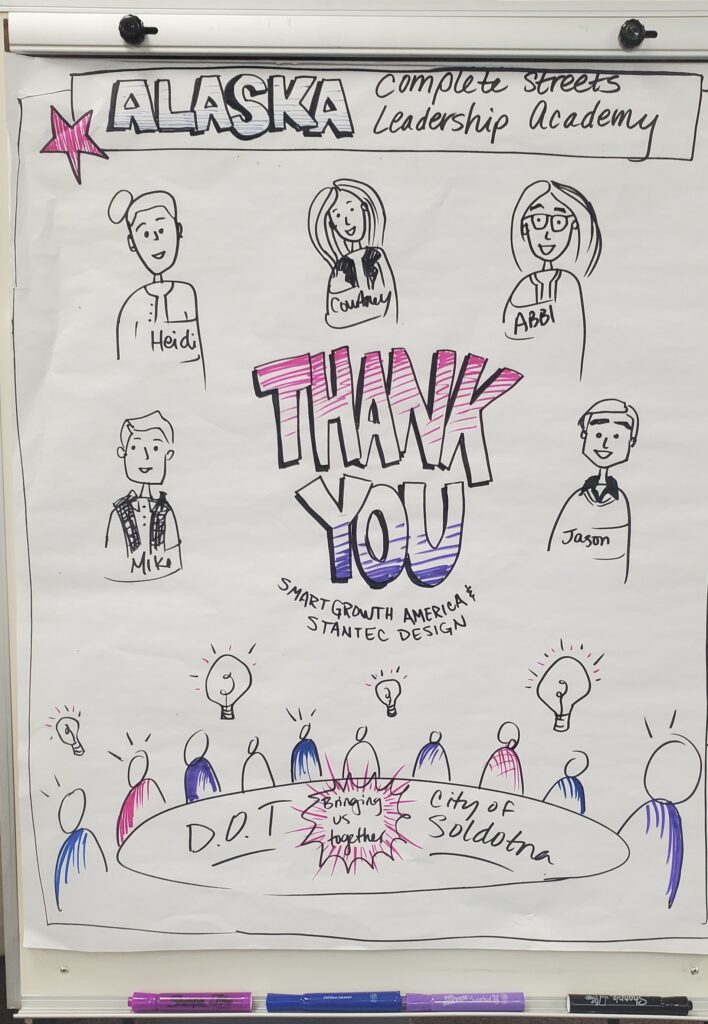
These Complete Streets Leadership Academies are supported by the Centers for Disease Control and Prevention under cooperative agreement OT18-1802 supporting the Active People, Healthy NationSM Initiative, a national initiative led by the CDC to help 27 million Americans become more physically active by 2027. Learn more.